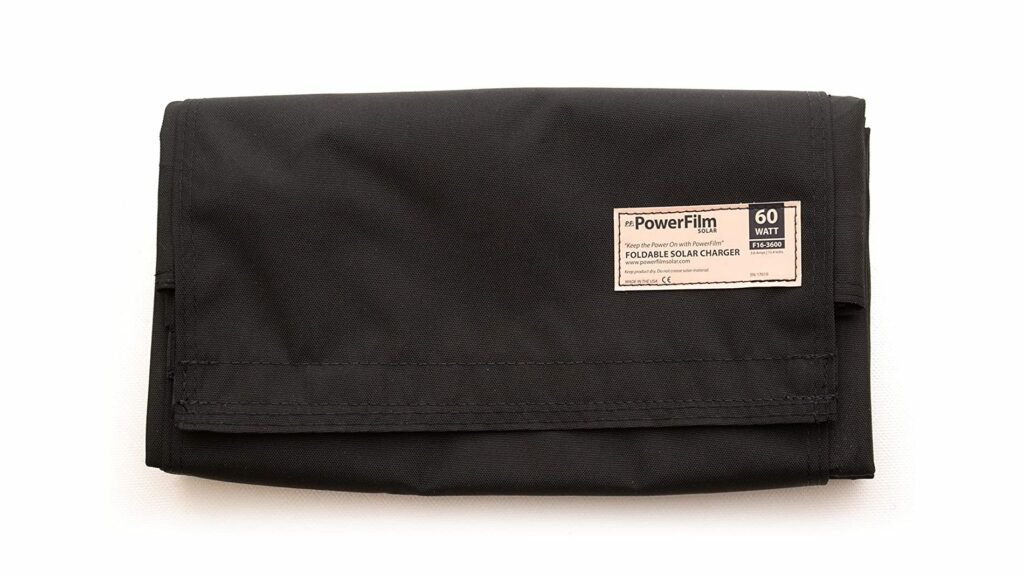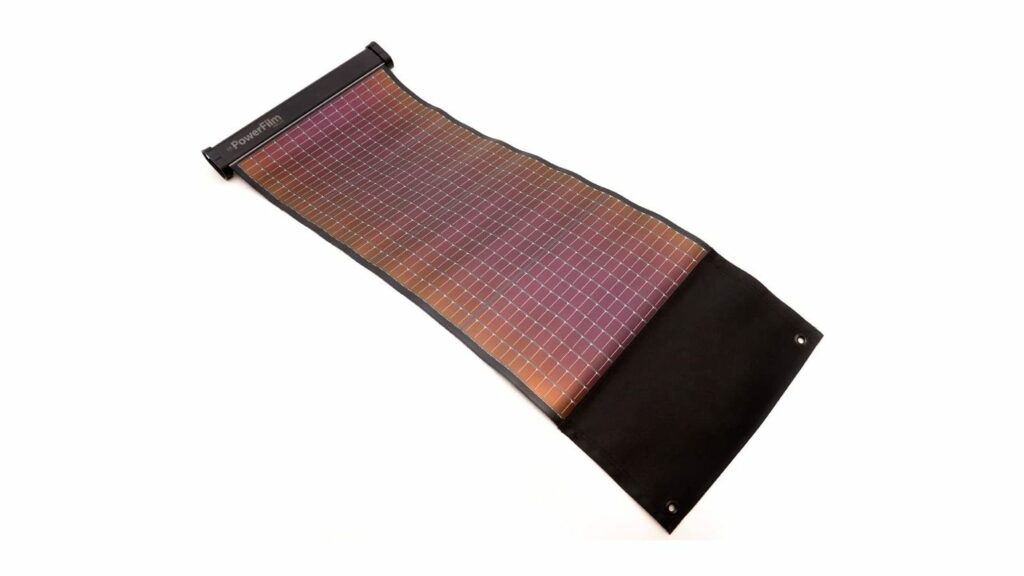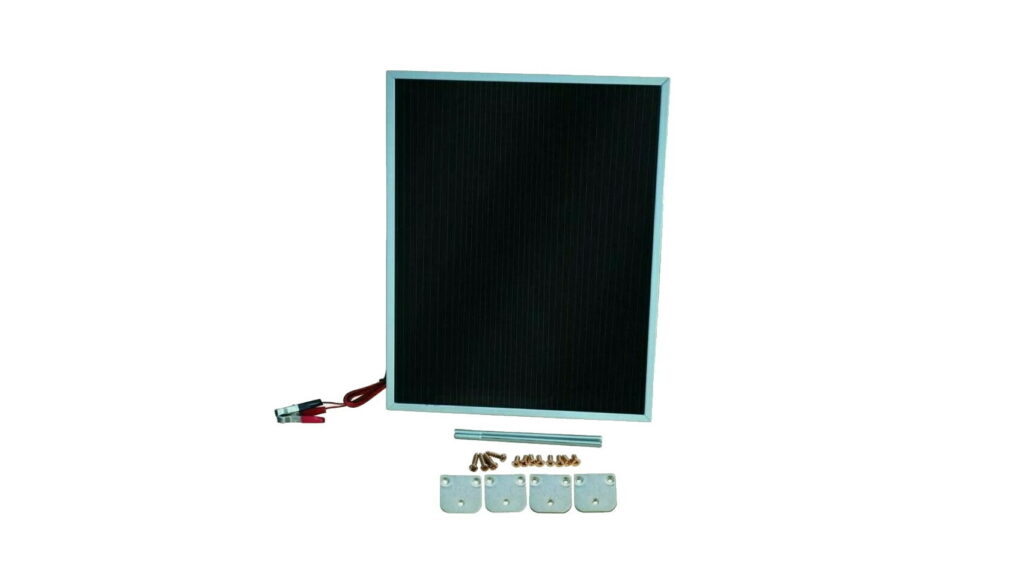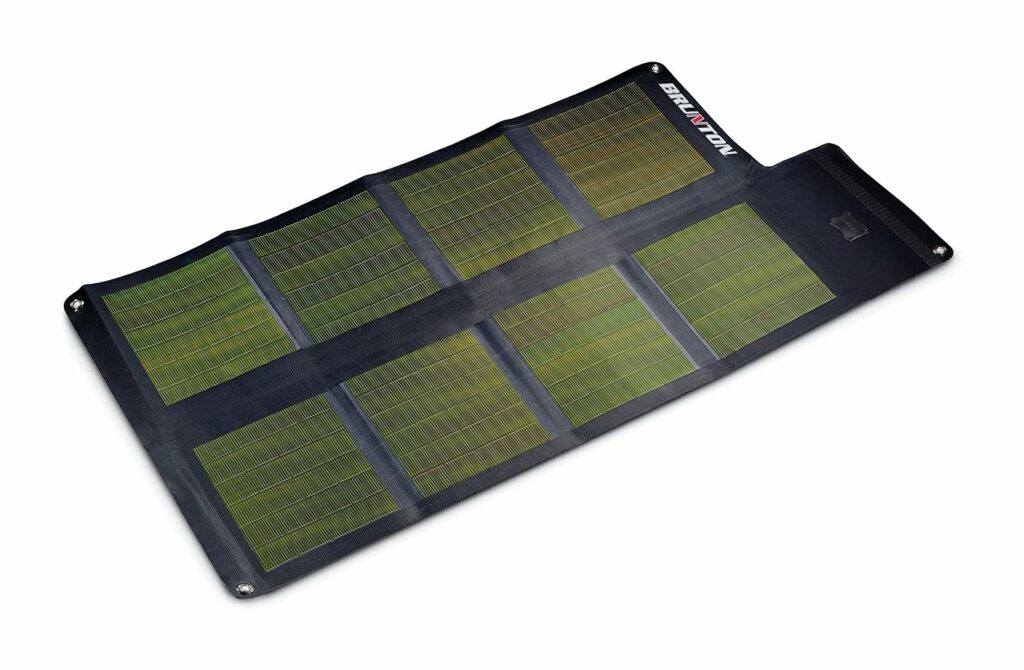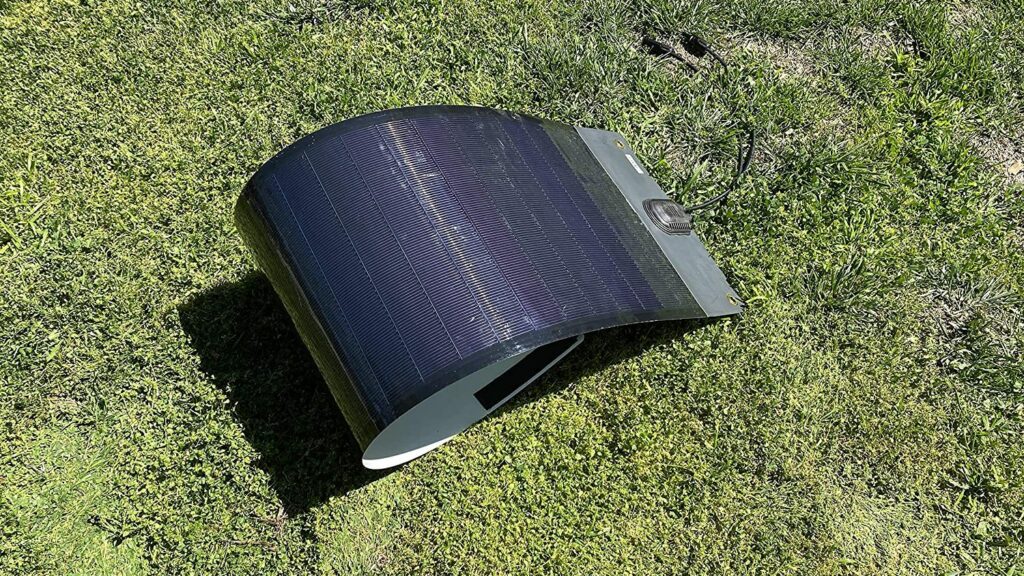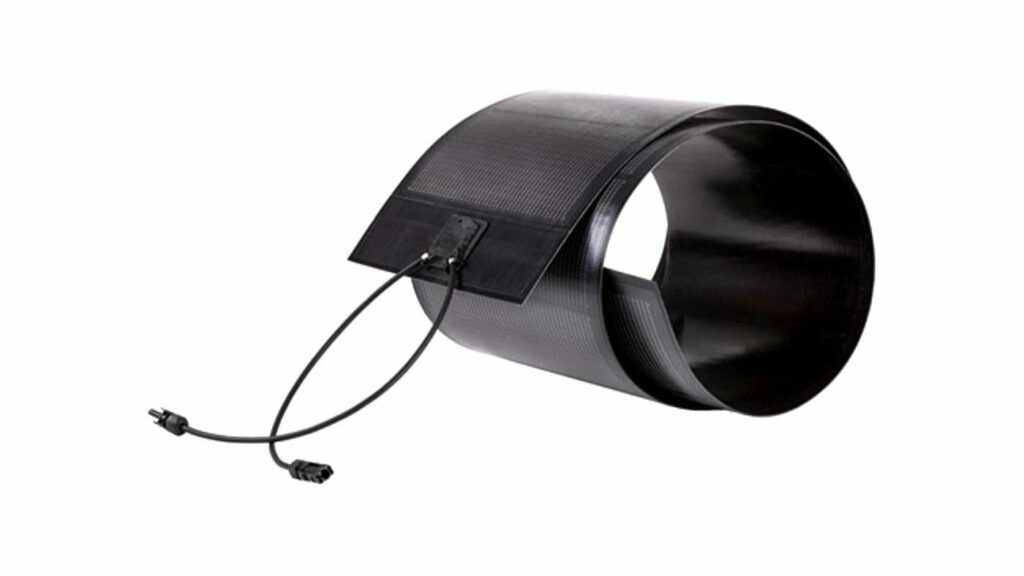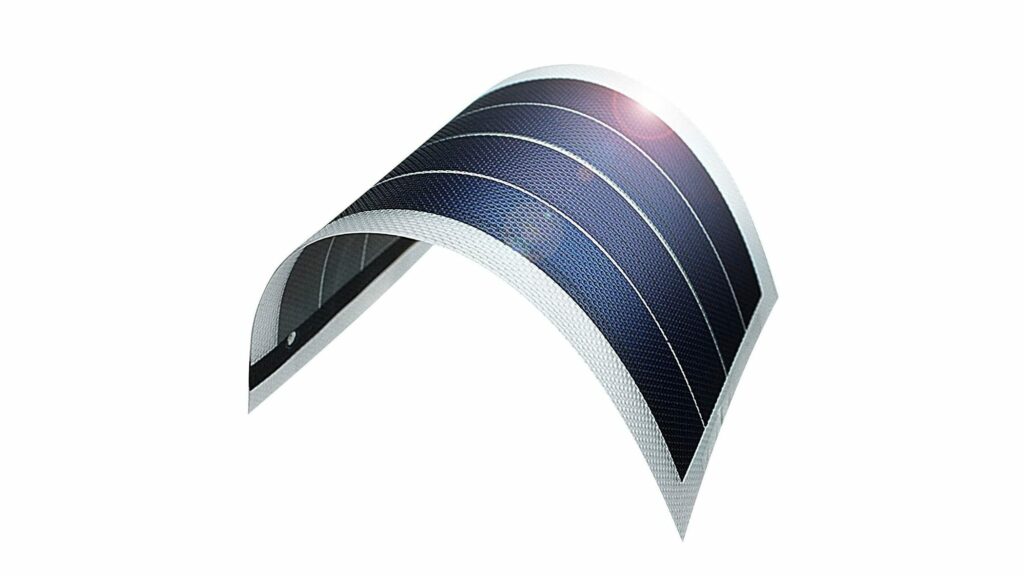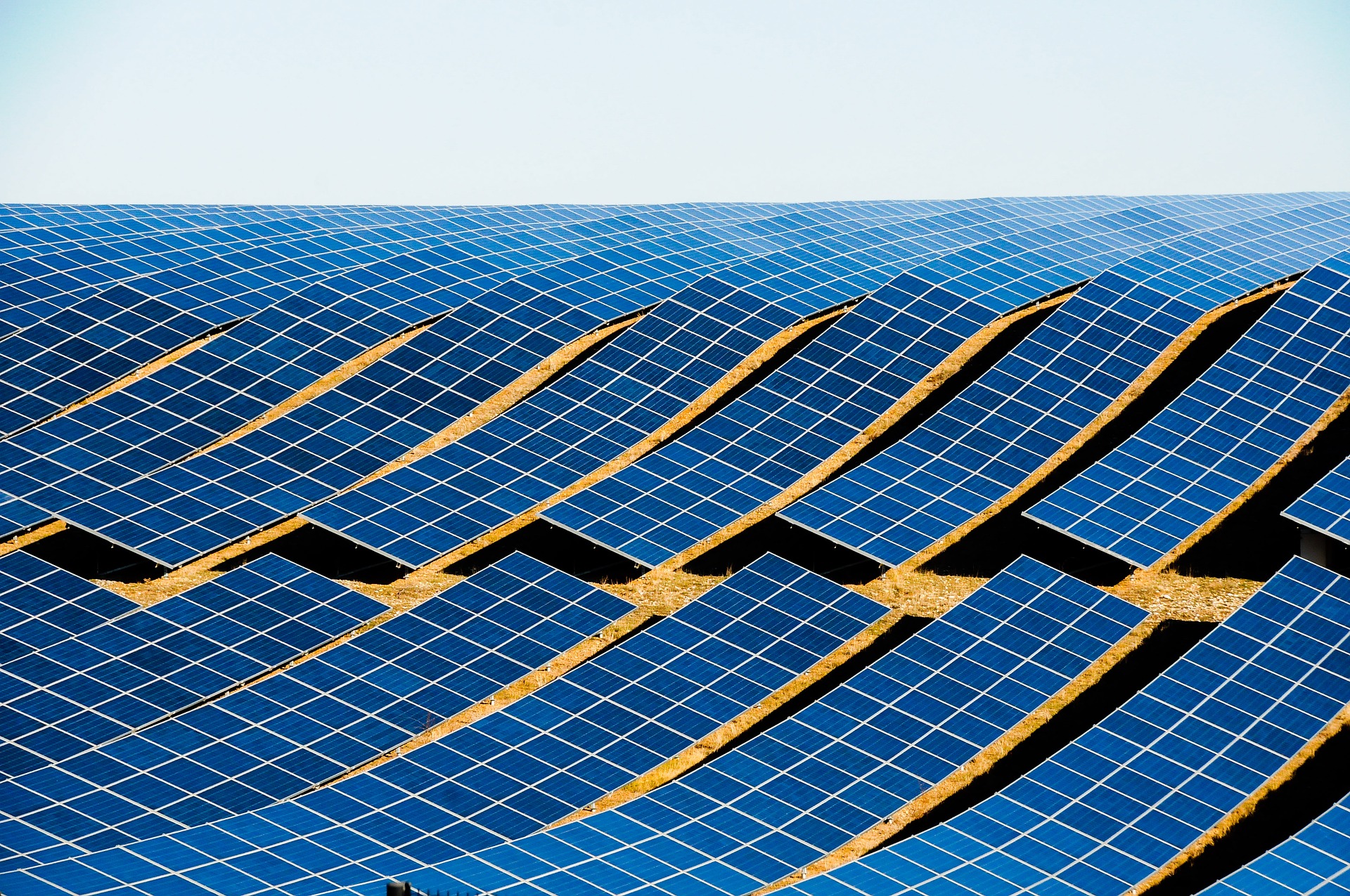
Did you hear the latest news about thin film solar technology?
It’s no longer true that all thin film solar panels have abysmal efficiencies in converting sunlight to electrical energy, rendering them pretty useless for generating enough solar power to meet your energy demands — either high or low.
In fact, some thin film modules achieve efficiencies that rival — or even surpass — those of the best mono- and polycrystalline solar panels on the market today.
But that’s not all.
In this article, you’ll discover several other amazing characteristics of thin film solar panels that merit a closer look. We’ve done the hard work for you in finding the 7 best thin film solar panels to meet your energy needs when traveling, enjoying the outdoors, prepping, or experiencing a home power outage.
Also read: 7 best RV solar panels and kits with complete buyer’s guide (2021)
Depending on your property or roof, thin film solar panels may even be a cost-effective alternative to heavy, rigid crystalline modules that you commonly see today on rooftops.
If you’d like to view our top picks right away, here’s the list of the 7 best flexible thin film solar panels.
Wondering what to look for (and avoid) when shopping for thin film solar modules? Our educational buyer’s guide below is a great place to start.
To find details on our selection process for the best thin film solar panels, please check out our previous article.
Table of Contents
7 best flexible thin film solar panels: At a glance
- Best all around: PowerFilm 60W 12V Foldable Solar Panel
- Best lightweight solar charger: PowerFilm LightSaver Max 60Wh (Li-ion) Portable Solar Charger
- Best lightweight solar charger runner-up: Competition 7W Solar Panel – Amorphous
- Best lightweight solar charger runner-up: Brunton 26W CIGS Foldable Solar Array
- Best marine: MiaSolé 50W CIGS Flexible and Rollable PV Solar Panel Charger
- Best marine runner up: Rich Solar 80W CIGS Flexible Solar Panel
- Best DIY solar charger (small projects)/budget: Jiang 1W 6V Flexible Solar Charger
If you’re going on a day hike or weekend camping trip and worried that you won’t have the power to take all the video you’d like to, thin film solar panels may be your answer. Maybe you need a waterproof photovoltaic (PV) module for a day of sailing? Here are the best seven options in thin film solar panels arranged by category.
Best all around: PowerFilm 60W 12V Foldable Solar Panel
PowerFilm is an American company producing cutting-edge thin film solar panels based on amorphous silicon (a-Si) technology. Their panels contain less than 1% of the silicon contained in crystalline panels, making them very environmentally friendly.
Unlike some other thin film panel types, they are free of cadmium, a toxic heavy metal.
With a temperature coefficient of only -0.19%, these panels barely lose a little bit of performance when it’s hot outside. (Crystalline panels may have a value closer to -0.40% to -0.60%.) In fact, the U.S. military uses them in the desert where they still perform spectacularly on the tops of vehicles.
This item contains solar cells attached to a weather-resistant fabric that is easily foldable.
Our top pick PowerFilm product may be used to charge a phone, tablet, laptop, 400Wh battery, among other things.
What we like about PowerFilm 60W thin film solar panel:
- Detailed operating instruction sheet with information on specific accessories needed when charging various things available on their website
- Can charge through windows, low-light conditions
What we don’t like about PowerFilm 60W thin film solar panel:
- Need extension adapters to connect to solar generators (not included)
Key PowerFilm 60W 12V Foldable Solar Panel specs:
- Solar panel: 60W a-Si thin film, 5-7% efficiency
- Panel weight & dimensions (folded): 6 lbs, 13 x 7.5 x 2.7 in.
- Average output: 240Wh/day
- Included: 12V female car charger adapter
- Warranty: 3-yr/80%; 1-yr limited material, workmanship
- Price: $834
Best lightweight solar charger: LightSaver Max 60Wh (Li-ion) Portable Solar Charger by PowerFilm
Have you ever wanted a lightweight solar charger that can actually store the energy it produces? Finally, the LightSaver Max comes to the rescue.
Made in the USA by PowerFilm, you won’t find a lighter, thinner, more durable, and more dependable solar charger anywhere.
This charger captures energy from the sun and stores it in its internal battery. You can then charge your USB or 12V device anytime by plugging into the battery. No more need to place your device outside (where it could overheat or get damaged) to charge it!
How cool is that?
To protect the sensitive electronics within, be sure to roll their compartment under the PV panels when they’re exposed and unrolled in the sun.
The LightSaver Max can handle charging these and similar devices with ease:
- Cell phones
- Tablets
- Some laptops
- GoPros
- GPS devices
- Some ham radios
Check out the Powerfilm website for super helpful FAQs, instructions, care info, and specs on the LightSaver Max.
What we like about LightSaver Max 60Wh portable solar charger
- Incorporates a rechargeable lithium battery
- Can charge through windows
What we don’t like about LightSaver Max 60Wh portable solar charger
- Salt water will damage the LightSaver Max so no ocean sailing
Key LightSaver Max 60Wh portable solar charge specs
- Solar Panel: 60W a-Si thin film, 5-7% efficiency
- Panel Weight & Dimensions: 5 lbs, 13.5 x 2.5 x 1.5 in.
- Battery: 1x 60Wh lithium-ion
- Average Output: 240Wh/day
- Included: USB-A to USB-C charging cable, 12V input charging cable, 12V output cable
- Warranty: 1-yr limited material, workmanship
- Price: $470
Also read: The 7 best flexible solar panels: Reviews and buyer’s guide (2021)
Best lightweight solar charger runner-up: Competition 7W Solar Panel
Are you looking for a very easy-to-use PV panel to top off your batteries and keep them charged? Competition Solar’s 7W a-Si solar panel does just that.
RVers, boaters, and drivers are just a few people who’d find this charger handy when their vehicles are in storage or not being used for a long time. Just connect cables to your 12V battery and put the panel outside.
You should not need a charge controller unless you’ve hooked several of these thin films together.
This single panel may not be sufficient to charge in one day or less a battery that’s low on charge because it’s been used. But given enough time it will recharge it.
Although there doesn’t appear to be a company website, we found a four-page instruction manual on this solar charger that listed a 800 number for technical support.
What we like about Competition 7W Solar Panel
- Can charge up a battery even in low-light conditions
- Inexpensive
What we don’t like about Competition 7W Solar Panel
- Several reviewers stated there is no built-in bypass diode to prevent power loss at night
- Not waterproof
- No USB adapter
Key Competition 7W Solar Panel specs
- Solar Panel: 7W a-Si thin film, unknown efficiency
- Panel Weight & Dimensions: 3 lbs, 12.4 x 15.7 x 0.72 in.
- Average Output: 28Wh/day
- Included: 7W solar panel, battery clamps
- Warranty: 5-yr/80%
- Price: $26
Best lightweight solar charger runner-up #2: Brunton 26W CIGS Foldable Solar Array
Running on CIGS thin film solar panels, this Brunton 26W foldable array is a reliably compact source of power when you’re far from an electrical outlet and in need of a charge.
This CIGS solar charger will easily power up:
- Cell phones
- Headlamps
- Digital cameras
- Laptops
- DVD players
- MP3 players
- GPS devices
Brunton recently told us by email that they have discontinued their solar power products. They couldn’t tell us the panel efficiency. But since it’s a CIGS thin film, it’s at least 19% (probably higher).
What we like about Brunton 26W CIGS Foldable Solar Array
- Packable, portable, and oh so reliable!
- Stellar reviews on several websites
What we don’t like about Brunton 26W CIGS Foldable Solar Array
- No USB adapter (multiple cables connected together will serve this purpose, but not just one by itself)
- Since it’s discontinued (but still for sale on multiple websites) you may have trouble finding support
Key Brunton 26W CIGS Foldable Solar Array specs
- Solar Panel: 26W CIGS thin film, unknown efficiency
- Panel Weight & Dimensions: 28 oz., 11 x 8.5 x 1 in.
- Average Output: 104 Wh/day
- Included: 26W solar panel, storage sack, vehicle outlet cable, multi-linking cable, battery clamp cable
- Warranty: 1-yr limited material, workmanship
- Price: $350
Best Marine: MiaSolé 50W CIGS Flexible and Rollable PV Solar Panel Charger
MiaSolé is an American solar company specializing in CIGS thin film PV modules. This is reason enough why we love this company!
Most of the work MiaSolé does at this time consists of large, custom solar projects out of reach of average consumers. Finding one of their superb solar products for sale at a reasonable price made us jump for joy!
Compatible with solar generators that can be charged with a 12V car cigarette lighter, this 50W thin film solar panel will serve you well, keeping you powered up even when it’s not too sunny out.
Its IP68 rating (junction box, too!) means it’s perfect for water-related fun, including salt water.
What we like about MiaSolé 50W CIGS Flexible and Rollable PV Solar Panel Charger
- Grommet holes and Velcro for easy and secure placement and reuse
- Can be rolled and stored as a cylinder with 20 in. diameter
What we don’t like about MiaSolé 50W CIGS Flexible and Rollable PV Solar Panel Charger
- A 25-yr performance warranty would be nice.
Key MiaSolé 50W CIGS Flexible and Rollable PV Solar Panel Charger specs
- Solar Panel: 50W CIGS thin film, unknown efficiency
- Panel Weight & Dimensions: 8 lbs, 39.7 x 13.7 in.
- Average Output: 200Wh/day
- Included: 50W solar panel
- Warranty: 10-yr/90%; 1-yr limited material, workmanship
- Price: $80
Also read: 7 best portable solar panels for off-grid adventures
Best marine runner-up: Rich Solar 80W CIGS Flexible Solar Panel
Very similar to our pick above of the best marine thin film solar panel, Rich Solar’s CIGS PV module is IP67 rated (connectors and junction box).
It is very long, so perfect for attaching to the top or sides of a boat or vehicle.
Rich Solar told us by email that you can expect this CIGS PV panel to achieve at least 80% of its stated wattage.
The Rich Solar website has tons of useful information, especially its FAQ page.
What we like about Rich Solar 80W CIGS Flexible Solar Panel
- Has an adhesive backing
- Received rave reviews on multiple websites
What we don’t like about Rich Solar 80W CIGS Flexible Solar Panel
- Very long; not wise to cut it and risk damaging the solar cells unless you’re a DIY electrician or solar pro
Key Rich Solar 80W CIGS Flexible Solar Panel specs
- Solar Panel: 80W CIGS thin film, unknown efficiency
- Panel Weight & Dimensions: 3 lbs, 68.4 x 14.4 in.
- Average Output: 320Wh/day
- Included: 80W solar panel, panel leads (pr): 12AWG, 2ft each
- Warranty: 5-yr limited material, workmanship
- Price: $260
Best DIY solar charger (small projects)/budget: Jiang 1W 6V Flexible Solar Charger
If you’re a die-hard DIYer, or maybe a parent looking for a science fair project idea for their child, this top thin film solar panel is for you.
Note: This panel is very bare bones. It consists of amorphous silicon layered between two sheets of plastic. Jiang points out that it’s easy to connect this PV module in series or in parallel with others like it to power up small electronic devices.
If you aren’t equipped to solder connecting wires on the back, then look elsewhere on this list of the best flexible thin film solar panels.
Jiang has a website with lots of solar panel information. On its Amazon page, there is a user manual which describes the triple junction technology of this a-Si thin film solar panel that gives it a 10% efficiency rating. Worth checking out if you purchase this product!
What we like about Jiang 1W 6V Flexible Solar Charger
- High-transparent, self-cleaning ETFE coating enhances the thin film’s efficiency as well as makes it water-resistant
What we don’t like about Jiang 1W 6V Flexible Solar Charger
- Need a soldering tool to connect it to a device or battery
Key Jiang 1W 6V Flexible Solar Charger specs
- Solar Panel: 1W, 10% efficiency
- Panel Weight & Dimensions: 1 ounce, 7.87 x 3.93 in.
- Average Output: 4 Wh/day
- Included: 1W solar panel
- Warranty: unknown
- Price: $14
Thin film solar panels: Buyer’s guide
New and improved solar panels enter the marketplace all the time. This is true especially in the case of a type of solar module that does not yet have wide application for general consumers: thin film solar panels.
However, there are several characteristics of thin film solar panels that make them ideal for certain uses. Your intended purpose for solar may be one of them.
By using the information in this buyer’s guide, you’ll be able to decide whether thin film solar panels are right for you.
What are thin film solar panels?
A thin film solar panel is a type of photovoltaic (PV) module that converts sunlight into electrical energy.
Unlike traditional mono- and polycrystalline solar panels, thin films are just that: extremely thin. Usually composed of several wafer-thin layers of photovoltaic material sandwiched between glass, plastic, or metal, each one may be just a micron thick. (For comparison, a human hair measures about 70 microns across.)
By contrast, conventional crystalline PV panels are several hundred times as thick.
There are many different materials used to manufacture thin film solar panels. The most common are:
- amorphous silicon (a-Si)
- cadmium telluride (CdTe)
- copper indium gallium diselenide (CIGS)
Also read: How do solar panels work? An in-depth explanation anyone can follow
Amorphous silicon (a-Si) thin film solar panels
As the original type of thin film technology, amorphous silicon thin films use the more readily available and cost-effective non-crystalline silicon. Only 1% of the silicon needed to make crystalline PV cells is used to form a-Si cells. The process is inexpensive and not fossil fuel energy-intensive like the manufacture of crystalline cells.
However, a-Si solar panels today reach an efficiency of about 8% while some of their crystalline counterparts achieve an efficiency of 23%.
Unfortunately, a company which was on the leading edge of a-Si R&D, Uni-Solar, went out of business before they could reach their goal of 20+% efficiency using triple junction technology. (Some Uni-Solar thin film products are still for sale on Amazon as of this writing.)
Here’s a short video by PowerFilm’s CEO and Co-Founder Frank Jeffrey explaining how amorphous silicon (a-Si) thin film PV modules are manufactured. In our list of the 7 best thin film solar panels, the top two are from PowerFilm.
Cadmium telluride (CdTe) thin film solar panels
Constructed from rare and carcinogenic materials, cadmium telluride thin film panels are mostly used in large scale commercial projects or for public utilities today. Like a-Si cells, they are manufactured rapidly and cheaply, allowing them the largest share among thin film panels in the commercial market.
Today, CdTe thin film panels deliver an efficiency that rivals many crystalline panels (18%+).
Copper indium gallium diselenide (CIGS) thin film solar panels
Even though CIGS is a newer addition to the thin film solar panel family, it has come far in a short time.
It’s typical that CIGS cells attain 23-26%+ efficiency in the lab and 19% in the real world these days. Scientists are working on scaling that superb efficiency up for wider market expansion. Currently, CIGS is used mostly for large commercial projects.
Using four elements to yield significant power in a manufacturing process that is relatively safe, inexpensive, and environmentally friendly compared to techniques based on crystalline silicon, cadmium, and tellurium, CIGS technology holds great promise as the future of solar power worldwide.
For the purposes of this list of the best thin film solar panels, we scoured the internet and came up with just three CIGS solar panels that could work for consumers today. We’re sure many others will become available soon, so be on the lookout.
Two American companies to watch on CIGS technology, (one already has a product on this list), are MiaSolé and Nanosolar.
Advantages of thin film solar panels
Besides being super lightweight and extremely flexible, there are several scientific advantages of thin film solar panels. We hope they convince you to love thin film solar panels as much as we do. 🙂
Here are the major pros:
- Produce significant energy output under low-light and cloudy conditions while crystalline panels do not
- Power output increases after the first few days of operation (higher than labeled rating), but that of crystalline panels doesn’t change
- Very low temperature coefficient compared to crystalline silicon PV (sometimes 2-3x as low) means thin films will perform better in hot weather (above 77℉) than their crystalline counterparts
- Thin films solar panels perform well under partial shading and when sun exposure isn’t direct. This is not the case for crystalline solar panels in that energy output drops significantly in these situations.
Disadvantages of thin film solar panels
Given the current state of solar panel technology, there are a few disadvantages of thin film solar panels.
- Lower efficiency compared to crystalline panels. However, since thin film panels have multiple p-n junctions, their theoretical limit surpasses that of crystalline panels. In other words, with more R&D, thin film solar panel efficiencies may skyrocket.
- Lifespan is shorter than that of crystalline panels, but this is improving. Some thin film panels carry a comparable 25 yr. performance warranty even now.
Where can you use thin film solar panels?
Although you may not (yet!) have heard too much about thin film solar panels, there are several ideal uses that make it worthwhile for individual consumers like you to consider purchasing thin films today.
The following list of activities may be enjoyed or performed by these groups: Preppers, dry campers, boondockers, hunters, birders, hikers, cross-country skiers, mountain climbers, sailors, kayakers, backpackers, hikers, scientists, military personnel, and field workers. In other words: just about everybody!
- Remote work in very hot weather or in a desert climate
- Dawn or dusk outdoor activities
- Outside adventures when it’s cloudy, foggy, or drizzly
- Traveling in a vehicle with many curved surfaces
- Trips where reliability of an energy supply or durability of equipment is more important than rapid charging of equipment
- Strenuous outings which demand light gear or wearable gadgets only
Note: Today, thin film solar panels aren’t commonly installed for residential solar power unless you have a very large roof or lots of property. As efficiencies increase while costs fall, we predict this may change.
Thin film solar panels are becoming popular on street lamps, car ports, buses, and trucks where they’re used for powering lights, air conditioning, Wifi, GPS systems, etc., so non-renewable, carbon-emitting energy sources don’t have to be consumed.
Vast stretches of thin films on skyscraper windows, landfills, or water bodies may contribute to energy production, too.
Thin films on mobile devices and clothes will accelerate our transition to clean energy as well.
Where have you spotted thin film solar panels recently?
Also read: Solar panels cost: Everything you need to know
The bottom line on the best thin film solar panels
Although thin film solar panels may not yet be ideal to supply all of your home energy needs, there are several thin film contenders that will keep your devices and appliances juiced up and ready to use when you’re traveling, vacationing, working outdoors, or encountering a power outage at home.
With the lowest carbon footprint of all solar modules today, extremely lightweight thin films will allow you to tread lightly on the earth in more ways than one.
Depending on your immediate needs, thin film solar modules could power up your weekend getaway or festival daytripping. When not in use, just store them conveniently in a backpack or coat pocket.
Enough of them covering your RV or van could allow you to dry camp comfortably for several days at least.
Using this list of the 7 best thin film solar panels, take advantage of their greater efficiency, low thermal resistance, and good performance under low light conditions that this often overlooked solar panel option has to offer.
You won’t be sorry if you do.
